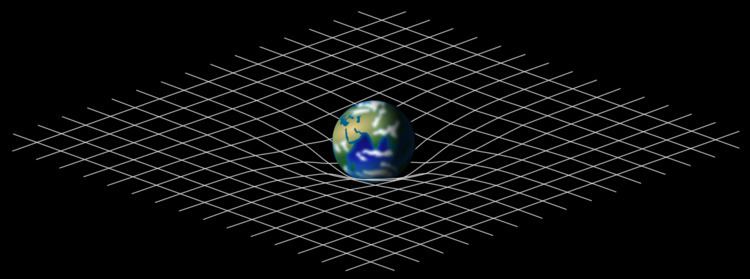 | ||
Linearized gravity is an approximation scheme in general relativity in which the nonlinear contributions from the spacetime metric are ignored, simplifying the study of many problems while still producing useful approximate results.
Contents
The method
In linearized gravity the metric tensor,
where
The perturbation is treated using the methods of perturbation theory, "linearized" by ignoring all terms of order higher than one (quadratic in
Applications
The Einstein field equations (EFE), being nonlinear in the metric, are difficult to solve exactly and the above perturbation scheme allows linearized Einstein field equations to be obtained. These equations are linear in the metric, and the sum of two solutions of the linearized EFE is also a solution. The idea of 'ignoring the nonlinear part' is thus encapsulated in this linearization procedure.
The method is used to derive the Newtonian limit, including the first corrections, much like for a derivation of the existence of gravitational waves that led, after quantization, to gravitons. This is why the conceptual approach of linearized gravity is the canonical one in particle physics, string theory, and more generally quantum field theory where classical (bosonic) fields are expressed as coherent states of particles.
This approximation is also known as the weak-field approximation as it is only valid if the perturbation h is very small.
Weak-field approximation
In a weak-field approximation, the gauge symmetry is associated with diffeomorphisms with small "displacements" (diffeomorphisms with large displacements obviously violate the weak field approximation), which has the exact form (for infinitesimal transformations)
Where
In the weak field limit, this gauge transformation simplifies to
The weak-field approximation is useful in finding the values of certain constants, for example in the Einstein field equations and in the Schwarzschild metric.
Linearized Einstein field equations
The linearized Einstein field equations (linearized EFE) are an approximation to Einstein's field equations that is valid for a weak gravitational field and is used to simplify many problems in general relativity and to discuss the phenomena of gravitational radiation. The approximation can also be used to derive Newtonian gravity as the weak-field approximation of Einsteinian gravity.
The equations are obtained by assuming the spacetime metric is only slightly different from some baseline metric (usually a Minkowski metric). Then the difference in the metrics can be considered as a field on the baseline metric, whose behaviour is approximated by a set of linear equations.
Derivation for the Minkowski metric
Starting with the metric for a spacetime in the form
where
The metric h is clearly symmetric, since g and η are. The consistency condition
The Christoffel symbols can be calculated as
where
Using
For the Ricci scalar we have:
Then the linearized Einstein equations are
or
Or, equivalently:
With a coordinate condition
If one uses the Lorentz invariant harmonic coordinate condition
then the last form above of the linearized Einstein equation simplifies to
To solve it, this can be rewritten as
where ∆ is the Laplacian on a spatial slice. If the stress-energy changes slowly (velocities are low compared to c), then this gives
as a generalization of the Newtonian formula for gravitational potential. This is solved iteratively by first replacing the second time derivative by zero and then inserting the h so obtained repeatedly until convergence.
Applications
The linearized EFE are used primarily in the theory of gravitational radiation, where the gravitational field far from the source is approximated by these equations.
